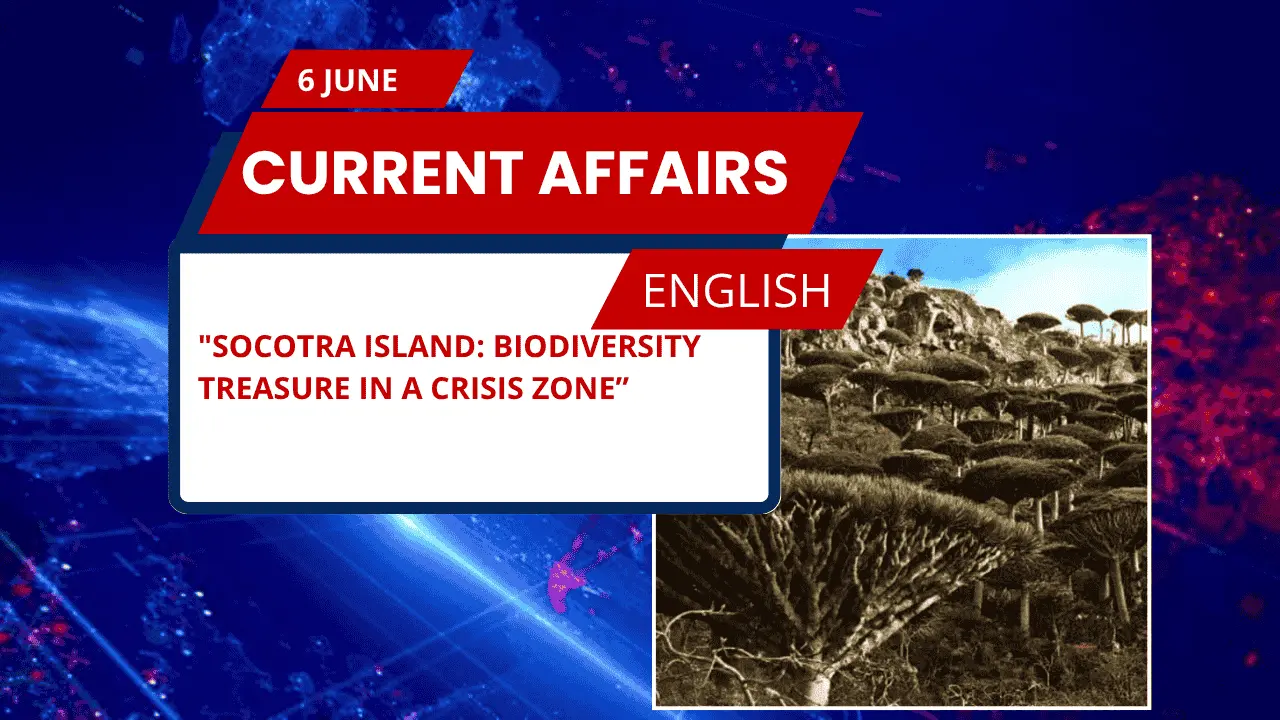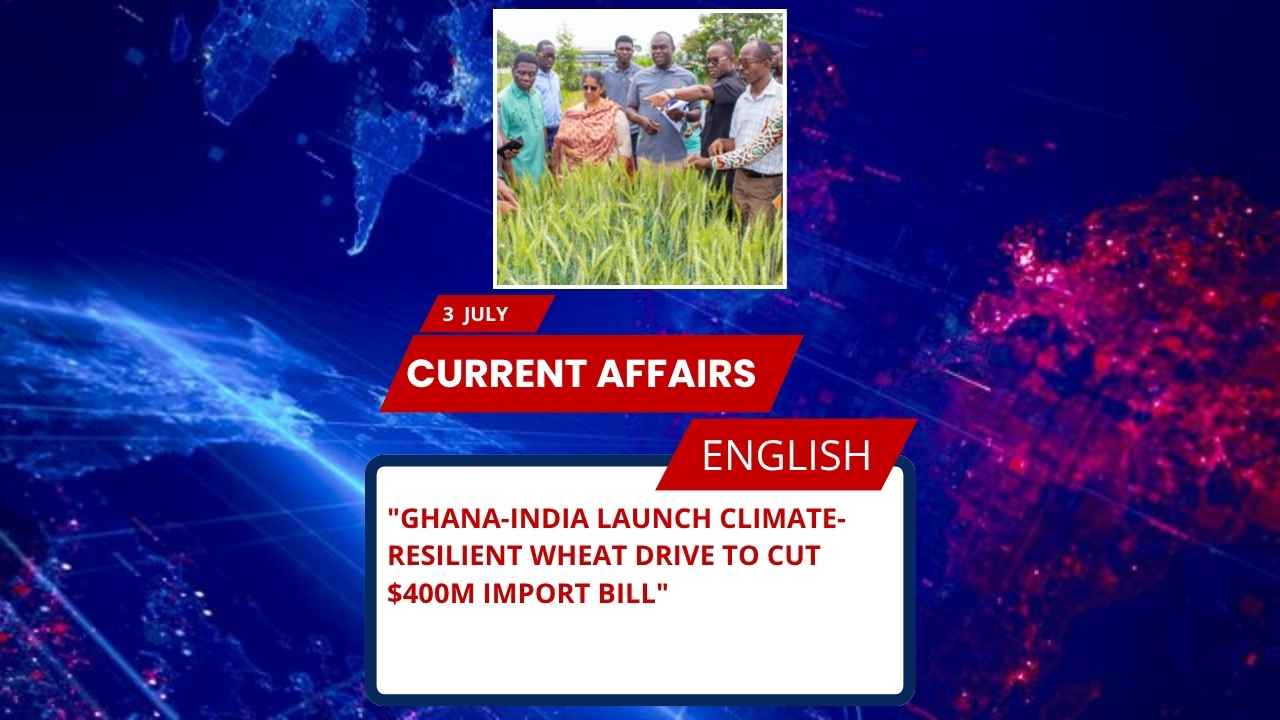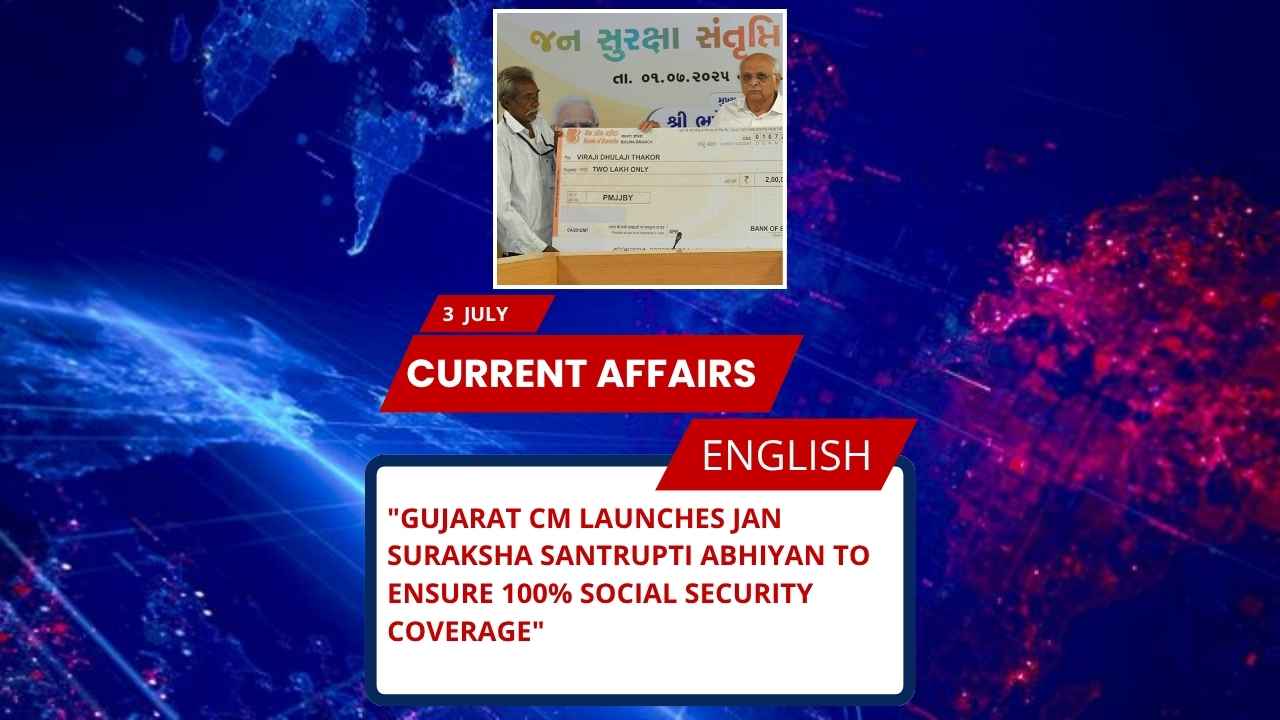
Important Key Points for SSC and Other Government Exams
- Location: Indian Ocean, southeast of Yemen (~340 km)
- UNESCO Status: World Heritage Site since 2008
- Biodiversity: Over 37% plant species are endemic
- Unique Flora: Dragon’s Blood tree, frankincense
- Climate: Semi-desert; isolated due to strong monsoon winds
- Geography: 3,796 sq km, coastal plains, limestone plateau, Hagghier Mountains
- Political Control: Part of Yemen; influenced by UAE-backed STC forces
- Strategic Presence: UAE military for security and humanitarian aid
- Economy: Fishing, pearl diving, livestock herding, small-scale farming
- Health Crisis: Global Acute Malnutrition (GAM) = 10.9%; Severe Acute Malnutrition (SAM) = 1.6%
- Humanitarian Efforts: Led by UAE and World Health Organization (WHO)
- Programme Goal: Reduce maternal & child mortality; strengthen healthcare
- WHO Focus: Health security, disease surveillance, emergency preparedness
Complete Details
Socotra Island, often called the Galápagos of the Indian Ocean, is a biodiversity hotspot and a geopolitically sensitive region located around 340 km southeast of Yemen. It was inscribed as a UNESCO World Heritage Site in 2008, largely due to its high rate of endemism—more than 37% of its plant species are not found anywhere else in the world.
Geographic and Ecological Overview
Socotra spans 3,796 sq km and includes a range of landscapes—coastal plains, limestone plateaus, and the rugged Hagghier Mountains. The climate is semi-desert, and its historical isolation due to strong monsoon winds has helped preserve its unique ecological identity. Iconic flora like the Dragon’s Blood Tree and frankincense plants contribute to its global ecological significance.
Political and Strategic Context
Though politically part of Yemen, the island’s governance is complex. The UAE-backed Southern Transitional Council (STC) wields significant influence, and the UAE maintains a military presence citing humanitarian and strategic interests. This military involvement adds a geopolitical layer to the island’s existing ecological and social challenges.
Socotra’s Economy
The economy of Socotra is traditional and resource-dependent. People mostly rely on fishing, pearl diving, livestock herding, and small-scale agriculture. However, due to geographic isolation and a fragile infrastructure, economic activities remain limited and often unsustainable.
Health Crisis and Humanitarian Support
Recent assessments have highlighted a growing health emergency. Malnutrition, especially among women and children, is rampant:
- GAM (Global Acute Malnutrition) rate = 10.9%
- SAM (Severe Acute Malnutrition) rate = 1.6%
To address this, a two-year humanitarian programme led by the UAE in partnership with the World Health Organization (WHO) was launched. The programme aims to:
- Improve maternal and child health
- Train local health professionals
- Upgrade health facilities
- Supply critical medications
- Establish robust disease surveillance systems
- Prepare for epidemics
Community Engagement and Broader Impact
Beyond medical aid, the programme includes community awareness campaigns and aims to build resilience against future health shocks. This initiative is part of a larger regional strategy to strengthen Yemen’s health infrastructure through international cooperation.
Static GK: Key Organization & Country Info
Yemen
- Capital: Sana’a (de facto), Aden (temporary)
- Currency: Yemeni Rial
- President: Rashad al-Alimi (Presidential Leadership Council)
- Geographical Importance: Near Bab-el-Mandeb Strait, connects Red Sea to Indian Ocean
World Health Organization (WHO)
- Founded: 1948
- Headquarters: Geneva, Switzerland
- Director-General: Dr. Tedros Adhanom Ghebreyesus
- Parent Organization: United Nations
- Key Mandate: Global health, disease surveillance, humanitarian health response
UNESCO
- Full Form: United Nations Educational, Scientific and Cultural Organization
- Founded: 1945
- Headquarters: Paris, France
- Function: Promotes cultural heritage, education, science; designates World Heritage Sites
Possible Exam Questions
Q1. Socotra Island is part of which country?
[A] Somalia
[B] Oman
[C] Yemen
[D] UAE
Correct Answer: [C] Yemen
Q2. Socotra Island was declared a UNESCO World Heritage Site in which year?
[A] 2010
[B] 2008
[C] 2005
[D] 2012
Correct Answer: [B] 2008
Q3. What percentage of Socotra’s plant species are endemic?
[A] 25%
[B] 30%
[C] 37%
[D] 50%
Correct Answer: [C] 37%
Q4. Which organization is running a joint health programme in Socotra along with UAE?
[A] UNDP
[B] WHO
[C] UNICEF
[D] Red Cross
Correct Answer: [B] WHO
Q5. The Dragon’s Blood Tree is native to which island?
[A] Madagascar
[B] Sri Lanka
[C] Andaman
[D] Socotra
Correct Answer: [D] Socotra







